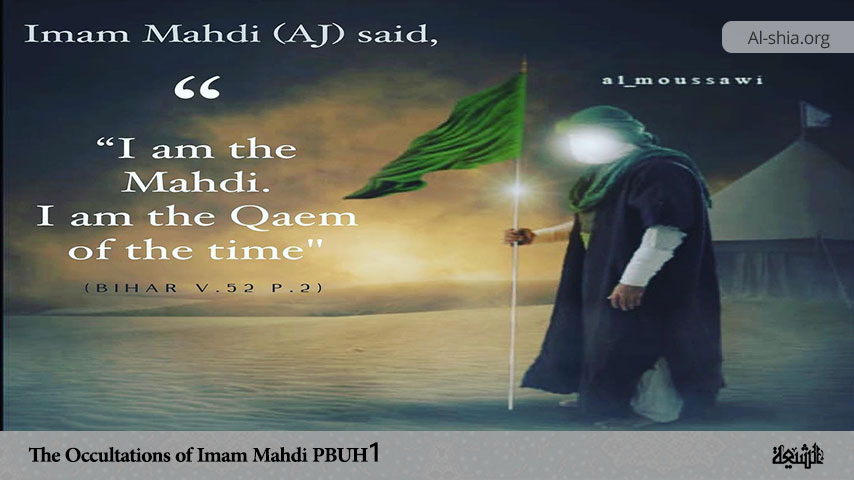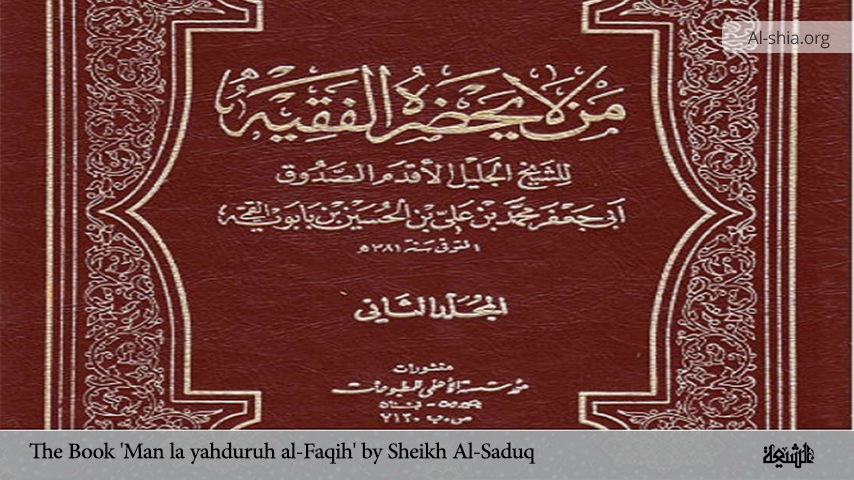Al-Shaykh al-Saduq is one of the greatest Shi’a hadith scholars of the 4th/10th century, the most prominent hadith scholar and Faqih of the hadith school of Qom. Up to 300 scholarly works have been attributed to him, most of which are not extant today. He has compiled the Man la yahduruh al-Faqih, one of the four hadith books of the Shi’a. .
In this article, we shall introduce Shaykh al-Saduq, his works, adventure, scholastic journeys, teachers and students.
Name and Lineage
His name is Muhammad bin Ali bin al-Hussein bin Musa bin Babawayh; Abu Ja’far As-Saduq al-Qummi (i.e. from the holy city of Qum); the master Sheikh and the head of the narrators.
His father was the respectful Sheikh Abu al-Hasan Ali bin al-Hussein bin Musa bin Babawayh: the master Sheikh of Qum in his time. He was also the most precedent, the master jurisprudent, and the most trustful of the scholars of his time.
Birth and Early Life
Al-Shaykh al-Saduq was born in Qum. Although it was impossible to define the very year in which he was born. However, it is well known that he was born after the death of Muhammed bin Uthman al-Umari (the second representative), which was in the year 305 A.H. That was the opening year of the representation of Abu al-Qasim al-Hussein bin Rawh (the third representative), who died in 326 A.H. As confirmation of this estimation, we provide the words of Sheikh As-Saduq himself in his book titled Kamal ud-Din wa Tamam un-Ni’ma:
Abu Ja’far Muhammed bin Ali al-Aswad related to us: After the death of Muhammed bin Uthman al-Umari, Ali bin al-Hussein bin Musa bin Babawayh (i.e. As-Saduq’s father) asked me to tell Abu al-Qasim Ar-Rawhi –i.e. bin Rawh- to ask our master Sahib uz-Zaman to pray to Allah for giving him a male baby. Abu al-Qasim informed that he asked the Imam, who rejected. Three days later, Abu al-Qasim informed that the Imam (a) had prayed to Allah for Ali bin al-Hussein and he would be given a blessed male baby, who would be the means by which Allah, Exalted is He, would benefit (many people). Moreover, many boys would come after that baby.
(Abu Ja’far Muhammed bin Ali al-Aswad said) After a period, Ali bin al-Hussein was given Muhammed (i.e. As-Saduq) followed by many other boys.
From this narration, we can conclude that Sheikh As-Saduq, (Allah may have mercy be upon him), had come to this world out of the prayer of Imam al-Mahdi (afs) after the death of Muhammed bin Uthman al-Umari; after the year 305 A.H., when his father Sheikh Ali bin al-Hussein traveled to Iraq and met Abu al-Qasim al-Hussein bin Rawh and asked him some questions… etc. Hence, Sheikh As-Saduq was born in about 306 A.H. Sheikh As-Saduq used to take pride in such a birth and say, ‘I was born due to the prayer of Imam al-Mahdi (a).’
Sheikh As-Saduq grew up in the laps of virtue; his father used to feed him with the knowledge, shower him with the abundance of his knowledge and moralities, and circulate on him the lights of his purity, God-fearing, piety, and ascetics. All these contributed in the scholastic perfection and growth of Sheikh As-Saduq who lived under the wing of his father for more than twenty years during which he drank this knowledge and took from the great flow of his father’s information, moralities, and conducts.
In addition, he grew up in the city of Qum, which was swarming with the scholars and narrators, such as the master of the scholars of Qum Muhammed bin al-Hasan bin Ahmed bin al-Waleed and Hamza bin Muhammed bin Ahmed bin Ja’far bin Muhammed bin Zaid bin Ali as well as many others whose sessions and lectures were frequently attended by Sheikh As-Saduq.
After a short while, Sheikh As-Saduq became that great figure by whom people were benefiting. He also became such a distinctive sign of retaining and intelligence. He exceeded his companions in fields of virtue and knowledge and became such an unparalleled person.
Furthermore, the political circumstances of that period played a significant role in crystallizing the personality of Sheikh As-Saduq who lived in the reign of the Buyid in Iraq and Persia (321-447 A.H.), the Fatimids in Northern Africa (296-567 A.H.), and the Hamdanian State in Mousel –Northern Iraq- and Syria (333-394 A.H.) It is well known that all these states were declaring their loyalty to the leadership of the Prophet’s household. In other words, they were Shia.
Scholastic Journeys
Not only was the intention of Sheikh As-Saduq to suffice with receiving knowledge from the master scholars of his town, but also it rose higher to encourage him to travel and emigrate far away from his hometown for seeking studies and knowledge.
In the beginning, he traveled to the city of Ray to answer the summons of Rukn ad-Dawla al-Buwayhi (the Buyid), who died in 366 A.H. There, Sheikh As-Saduq met the scholars of that city, such like Sheikh Abu al-Hasan Mohammed bin Ahmed bin Ali bin Asad al-Asadi whose famous nickname is Abu Jurada al-Barda’i. That was in 347 A.H. He also met Ya’qoub bin Yousuf bin Ya’qoub, Ahmed bin Mohammed bin As-Saqr As-Sa’igh al-Adl (the decent), Abu Ali Ahmed bin al-Hasan al-Qattan and many others.
He then traveled to the city of Khurasan for the visitation of the Holy Shrine of Imam Ar-Ridha (a) in 352 A.H. After that, he returned to the city of Ray. In 367 A.H., he made his second journey to the Holy Shrine of Imam Ar-Ridha (a).
During his third journey which was made in 368 A.H., he passed by the cities of Istrabad and Jurjan where he attended the lectures of Sheikh Abu al-Hasan Muhammed bin al-Qasim Alistrabadi—the famous exegesist (of the Holy Quran) and orator.
He also attended the classes of Sheikh Abu Muhammed al-Qasim bin Muhammed Alistrabadi, Sheikh Abu Muhammed Abdous bin Ali bin al-Abbas al-Jurjani, and Sheikh Muhammed bin Ali Alistrabadi.
In his journey back from the visitation of the Holy Shrine of Imam Ar-Ridha (a) Sheikh As-Saduq passed by the city of Nisapur and resided there for a period. About this residence, he said: “After I had satisfied my wishes for the visitation of Imam Ali bin Musa Ar-Ridha (a) I was back in Nisapur where I resided. I found that the majority of the Shia there, who were frequently referring to me, were perplexed by the invisibility –Ghaybah-and doubted the matter of al-Qa’im (a). They therefore left the right course of the submission (to Allah) to join the path of personal opinions and analogy. Hence, I exerted all my efforts for guiding them to the right and taking them back to the path of correctitude by means of the relevant narratives of the Prophet and the Imams, peace be upon them.”
In Nisapur, Sheikh As-Saduq related the lessons of most of the scholars of that city, such like Sheikh Abu Ali al-Hussein bin Ahmed al-Bayhaqi, Sheikh Abdul-Wahid bin Muhammed bin Abdous An-Nisapuri, Sheikh Abu Mansour Ahmed bin Ibrahim bin Bakr al-Khuzi, Sheikh Abu Saeed Muhammed bin al-Fadhl bin Muhammed bin Ishaq
al-Muthekkir An-Nisapuri, Sheikh Abu at-Tayyib al-Hussein bin Ahmed bin Muhammed Ar-Razi and many others. As he passed by the cities of Marwalruth and Sarakhs, Sheikh As-Saduq attended the classes of Sheikh Muhammed bin Ali al-Marwalruthi, Sheikh Abu Yousuf bin Abdullah bin Abdul-Malik, and Sheikh Abu Nasr Muhammed bin Ahmed bin Tamim As-Sarakhsi. In the years 352 and 355 A.H., Sheikh As-Saduq was in Baghdad where he learnt from Sheikh Abu al-Hasan Ali bin Thabit Ad-Dawalibi, Sheikh Abu Muhammed al-Hasan bin Muhammed bin Yahya al-Husseini al-Alawi; Ibn Tahir, and Sheikh Ibrahim bin Harun al-Hiti as well as many others.
In 354 A.H., Sheikh As-Saduq had the honor to pilgrimage to the Holy House ofAllah. In his way, he passed by Kufa and learnt from the master scholars there, such like Sheikh Muhammed bin Bakran An-Naqqash, Sheikh Ahmed bin Ibrahim bin Harun al-Fami, Sheikh al-Hasan bin Muhammed bin Saeed al-Hashimi, Sheikh Abu al-Hasan Ali bin Easa al-Mujawir, Sheikh Abu Tharr Yahya bin Zaid bin al-Abbas bin al-Waleed al-Bezzaz, Sheikh Abu al-Qasim al-Hasan bin Muhammed As-Sakuni al-Kufi and many others.
He also traveled to many cities such as Hamadan, Ilaq, Balkh, Samarqand, Faraghana and others. In such journeys, Sheikh as-Saduq attended the lessons of many scholars in the cities that he passed by.
Scholastic State and Scholars’ Opinions
Sheikh As-Saduq, Allah may promote his position, was one of the master scholars of Shiism, great intellectuals, and well-versed men of knowledge. He was such a grand mastermind, abundant knowledgeable and well informed.
In his time, he was one of the most distinguishable scholars to whom everyone referred in questions concerning the rulings of the Sharia and was the sign upon whom everyone acted in the religious problems.
Sheikh At-Tusi; the master scholar of the sect mentioned Sheikh As-Saduq with the following words: Muhammed bin Ali bin al-Hussein bin Musa bin Babawayh al-Qummi is the lofty master. His surname is Abu Ja’far. He was so admirable, good narrator of hadith, skillful knowing of men, and bright criticizer of narrations. Besides, he was such distinct relater and encyclopedic that no one of the people of Qum could attain his rank. He had written about three hundred books.
An-Najashi referred to Sheikh As-Saduq with the following wording: Abu Ja’far al-Qummi who resided in Ray was our Sheikh and master jurisprudent. He was the representative of the sect (of Shiism) in Khurasan.
In his Ma’aalim ul-Ulemaa, Ibn Shahrashoub said the following about Sheikh As-Saduq: He was the best of the scholars of Qum. He wrote about three hundred books. In As-Saraa’ir, Ibn Idris referred to Sheikh As-Saduq with the following wording: He was trustworthy, highly reverent, well versed in narrations, good criticizer of the reports, well knowing of men, and well memorizer. He was the master of our Sheikh al-Mufid Muhammed bin Muhammed bin An-Nu’man.
Sheikh Hussein bin Abdus-Samad al-Harithi —father of Sheikh al-Bahaa’i— said about Sheikh As-Saduq: He was highly reverent, high-ranking scholar among the upper class as well as the ordinary people, good narrator of hadith, well knowing of jurisprudence and men, good discerning of the mental and analytical sciences, and good criticizer of reports.
He was also the master scholar, jurisprudent, and chief of the Saved Sect (Shia) in Khurasan and Iraq of the non-Arabs; (i.e. Persia). In the fields of narration and abundance of knowledge, he was so distinct over all those who lived in his time. The previous models have been few wordings of praise and extolment that were said about Sheikh As-Saduq.
Teachers and Students
Because of the many journeys that Sheikh As-Saduq made to various countries for the purpose of seeking studies, he could read, listen, deliver lectures, and gain the license of many scholars and masters of the countries that he passed by in the various fields of knowledge.
A good look in his numerous books, such as al-Amali, Man La Yahdhuruh ul-Faqih, At-Tawhid, Thawab ul-A’maal and many others, proves that he rested upon many of the Shiite and Sunni master scholars in the field of narrations. He also depended upon such scholars in the fields of hadith regarding a great variety of sciences and fields. The famous names of the master scholars upon whom Sheikh As-Saduq depended in relation of the reports are innumerable.
For avoiding lengthiness, we ask the dear reader to refer to the numerous books of biography so as to have an idea about the teachers of Sheikh As-Saduq. The students and the narrators on the authority of Sheikh As-Saduq are also too many to be mentioned in this book.
His Works
Sheikh As-Saduq dealt with a great variety of arts and sciences. He wrote many books; more than three hundred ones. Unfortunately, most of these books were lost. We, hereby, refer to some of them:
- Ali’tiqadat
- al-Amali
- Thawab ul-A’maa
- al-Khissal
- Sifat ush-Shia
- Iqab ul-A’maal
- Ilal ush-Sharaayi
- Uyounu Akhbar ir-Reza
- Fadhaa’il ul-Ash’hur ith-Thalatha
- Fadhaa’il ush-Shi’a
- Kamal ud-Din wa Tamam un-Ni’ma
- Mussadaqat ul-Ikhwan
- Me’aani al-Akhbar
- al-Muqannaa’ fi al-Fiqh
- Men La Yahdhuruh al-Faqih
- al-Mawaaizh
- al-Hidayatu fi al-Fiqh
Furthermore, there are tens of books most of which were lost, as we have previously mentioned. To have more information about such books, it is recommendable to refer to the books that mentioned the biography of Sheikh As-Saduq.
His Death
Al-Sheikh As-Saduq died in 381 A.H. He was more than seventy years old. He was buried in the city of Ray near the tomb of Abdul-Azeem al-Hasani, Allah be pleased with him.
Today, his tomb is one of the famous shrines whom are frequently visited by people who seek blessings there. In nearly 1238 A. H., Sultan Fat’h Ali Shah the Qajar reconstructed that holy shrine after the spread of the news of the good charismata that had been seen there. Al-Khawansari, in his Ar-Rawdhat, al-Mamuqani, in his Tanqeeh ul-Maqaal, and other scholars mentioned a number of charismata of Sheikh As-Saduq (after his death) occurred in his blessed shrine.
In the year 1238 A.H., a fissure occurred to the shrine due to the heavy rain. When some people entered inside the shrine for chasing the source of that fissure, they could reach the gutter in which Sheikh As-Saduq was buried. They found that his dead body was laid out while the genitals were covered. It was very sound and handsome. On the nails of the body, they could notice the signs of dye, while on the limbs, there were old threads of the torn coffin. As this event was rumored in the city of Tehran, Sultan Fat’h Ali… ordered to reform that fissure and reconstruct that shrine.

















